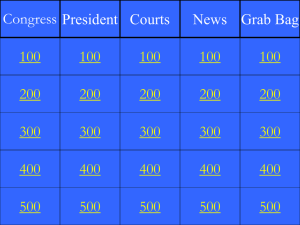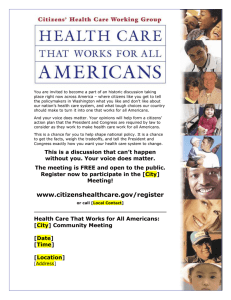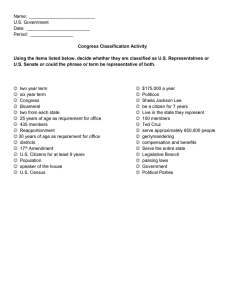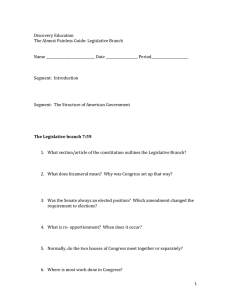WOODLAND HILLS HIGH SCHOOL LESSON PLAN
advertisement
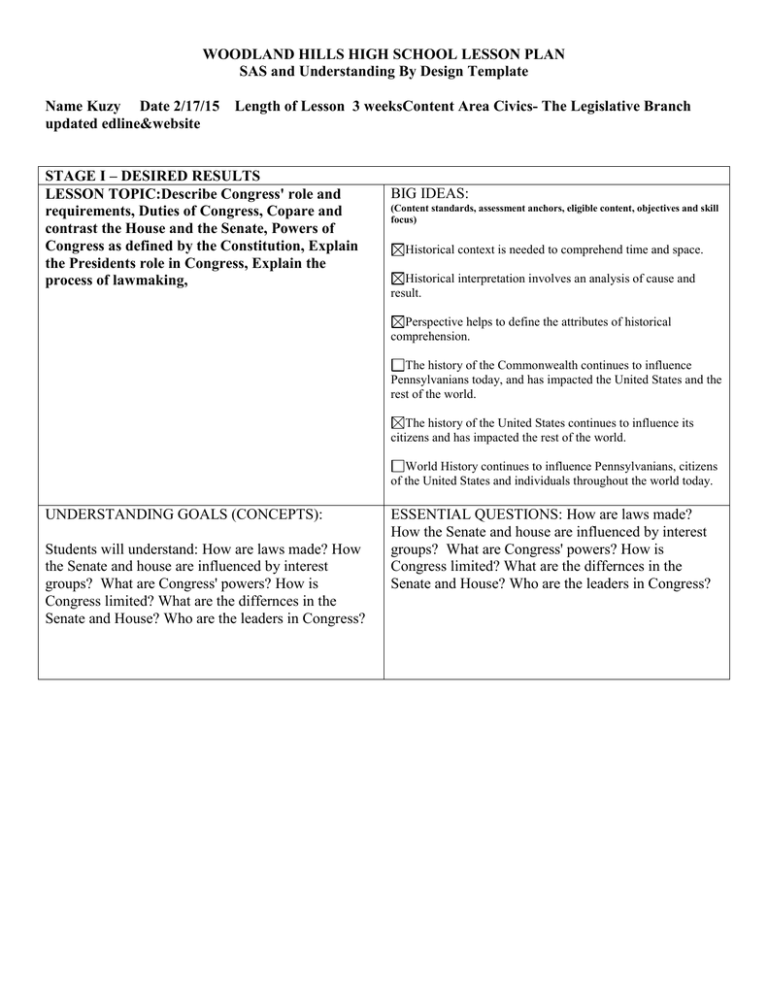
WOODLAND HILLS HIGH SCHOOL LESSON PLAN SAS and Understanding By Design Template Name Kuzy Date 2/17/15 updated edline&website Length of Lesson 3 weeksContent Area Civics- The Legislative Branch STAGE I – DESIRED RESULTS LESSON TOPIC:Describe Congress' role and requirements, Duties of Congress, Copare and contrast the House and the Senate, Powers of Congress as defined by the Constitution, Explain the Presidents role in Congress, Explain the process of lawmaking, BIG IDEAS: (Content standards, assessment anchors, eligible content, objectives and skill focus) Historical context is needed to comprehend time and space. Historical interpretation involves an analysis of cause and result. Perspective helps to define the attributes of historical comprehension. The history of the Commonwealth continues to influence Pennsylvanians today, and has impacted the United States and the rest of the world. The history of the United States continues to influence its citizens and has impacted the rest of the world. World History continues to influence Pennsylvanians, citizens of the United States and individuals throughout the world today. UNDERSTANDING GOALS (CONCEPTS): Students will understand: How are laws made? How the Senate and house are influenced by interest groups? What are Congress' powers? How is Congress limited? What are the differnces in the Senate and House? Who are the leaders in Congress? ESSENTIAL QUESTIONS: How are laws made? How the Senate and house are influenced by interest groups? What are Congress' powers? How is Congress limited? What are the differnces in the Senate and House? Who are the leaders in Congress? VOCABULARY: filibuster, cloture,speaker of the house, president protempore, majority party, minority party, floor leaders, whips, pocket veto, budget, policy, constitutents, bill, interest groups, census, congressional district Describe leadership in Congress Explain the process of how a bill becomes a law Colorful legislative term STAGE II – ASSESSMENT EVIDENCE PERFORMANCE TASK:Participate in review and vocabulary exercise, Complete chart on Congress, Participate in class reading, reading guides In small groups, students will create drawings to represent the colorful legislative terms for 8,tests and quizes STAGE III: LEARNING PLAN INSTRUCTIONAL MATERIALS AND PROCEDURES: RESOURCES: (Active Engagement, Explicit Instruction, textbook Metacognition, graphic organizer Modeling, Scaffolding) chart diagram Finish taking notes on reading guides 8.2,. Complete graphic organizers on the powers of congress. Notes Complete graphic organizer on the various powers of Congress Journal Notes Reading textbook Watch school house rock video: “How a Bill becomes a Law” Reading Complete flow chart STUDENT OBJECTIVES (COMPETENCIES/OUTCOMES): Students will be able to: Describe the groups to which a member of Congress is responsible Summarize the requirements for being in the House of Reps and the SenateExplain the duties of a member of Congress Compare and contrast the members of the House of Representatives and Senate Summarize the requirements for being in the house and Senate; include salary/benefits,Describe how Congress uses its powers to meet the goals stated in the Preamble Explain how limits on the power of Congress protect the rights of citizens , FORMATIVE ASSESSMENTS: #1. Exit Tickets #2. Graphic Organizers #3. Thumbs Up #4. Response Cards Others: INTERVENTIONS: ASSIGNMENTS: Reading Guides Primary Documents Graphic Organizers Q&A Primary document MINI LESSON: warm-up exit slips



